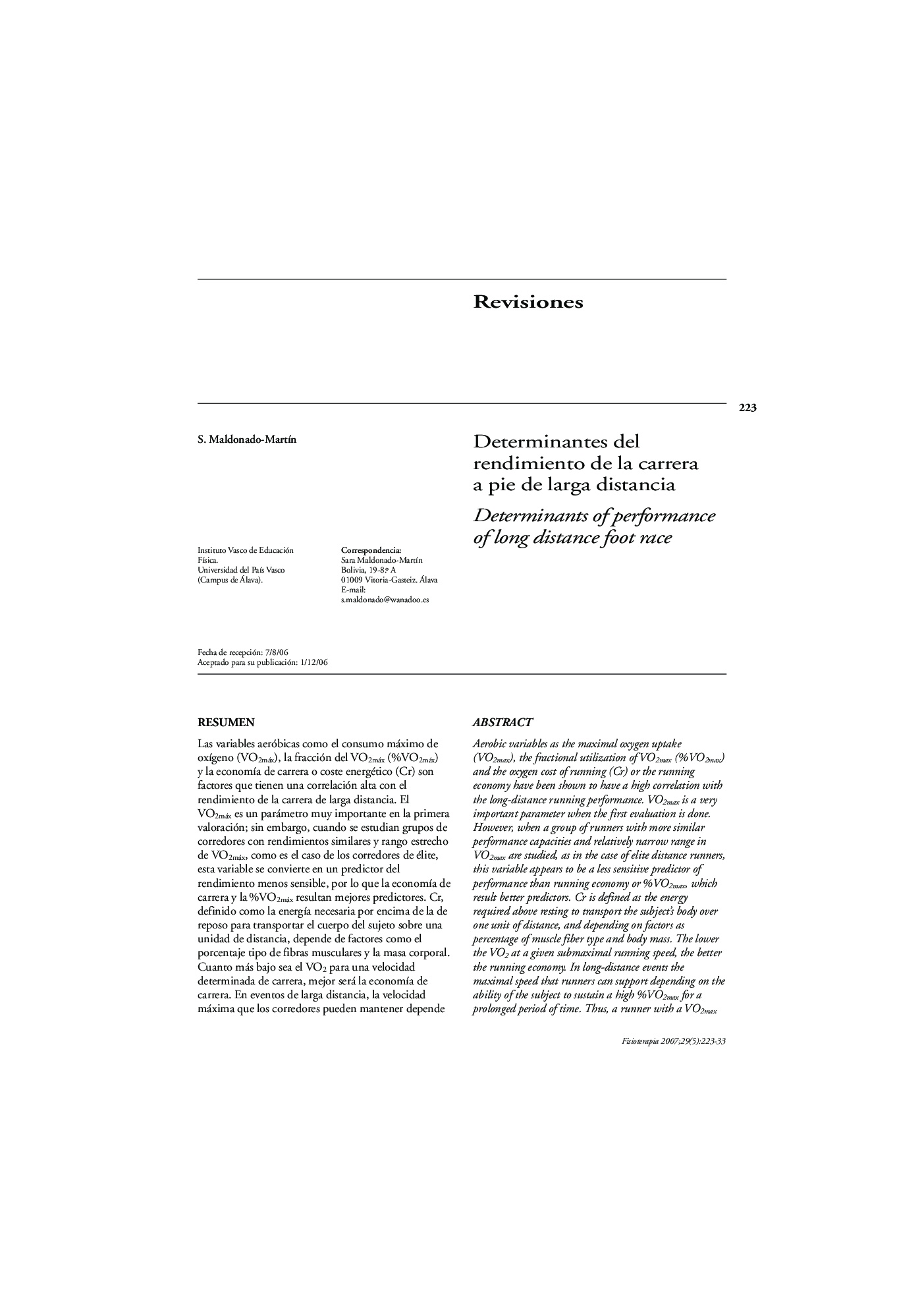| Article ID | Journal | Published Year | Pages | File Type |
|---|---|---|---|---|
| 2617592 | Fisioterapia | 2007 | 11 Pages |
Abstract
Aerobic variables as the maximal oxygen uptake (VO2max), the fractional utilization of VO2max (%VO2max) and the oxygen cost of running (Cr) or the running economy have been shown to have a high correlation with the long-distance running performance. VO2max is a very important parameter when the first evaluation is done. However, when a group of runners with more similar performance capacities and relatively narrow range in VO2max are studied, as in the case of elite distance runners, this variable appears to be a less sensitive predictor of performance than running economy or%VO2max, which result better predictors. Cr is defined as the energy required above resting to transport the subject's body over one unit of distance, and depending on factors as percentage of muscle fiber type and body mass. The lower the VO2 at a given submaximal running speed, the better the running economy. In long-distance events the maximal speed that runners can support depending on the ability of the subject to sustain a high%VO2max for a prolonged period of time. Thus, a runner with a VO2maxlower than other runners may compensate by running at a higher%VO2max to achieve the same VO2 (ml · kgâ1 · minâ1) during the race. In conclusion, the endurance runner, to be excellent, as well as being characterized by a large VO2max, and a high%VO2max, must also have a low Cr at submaximal speeds during the race.
Related Topics
Health Sciences
Nursing and Health Professions
Manual Therapy
Authors
S. Maldonado-MartÃn,
